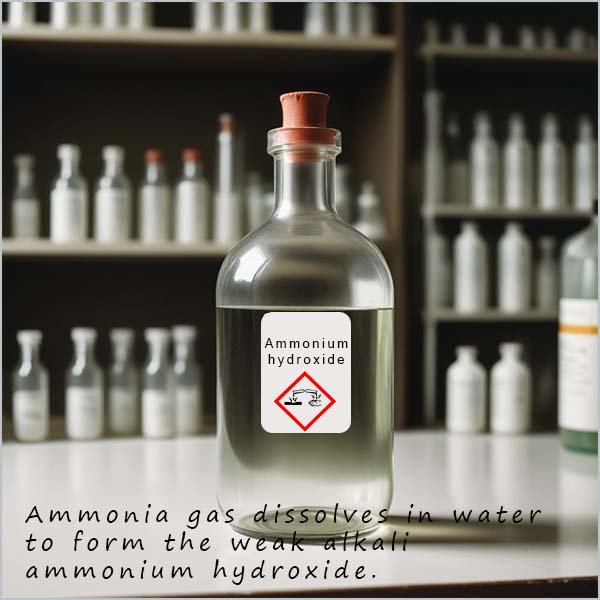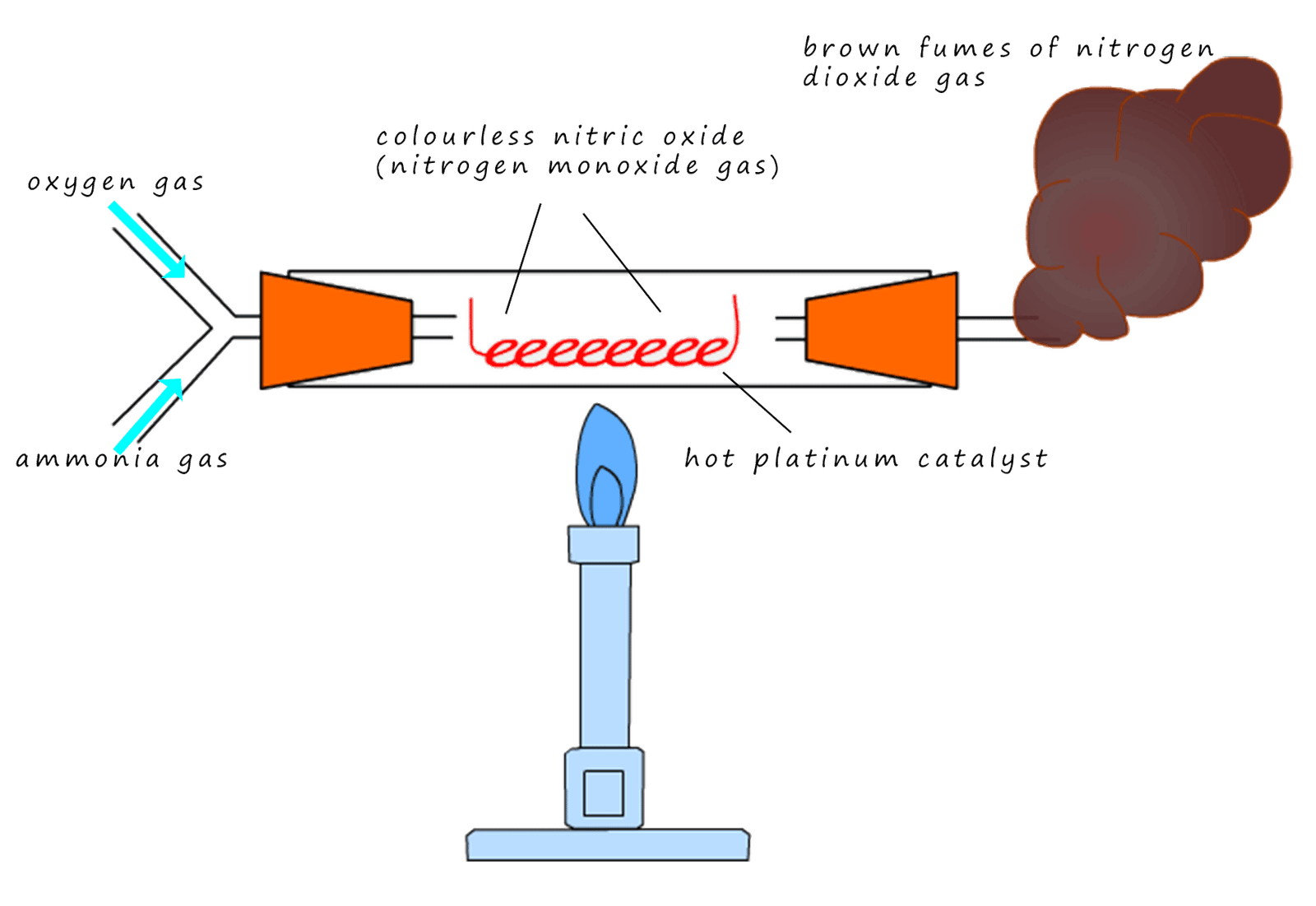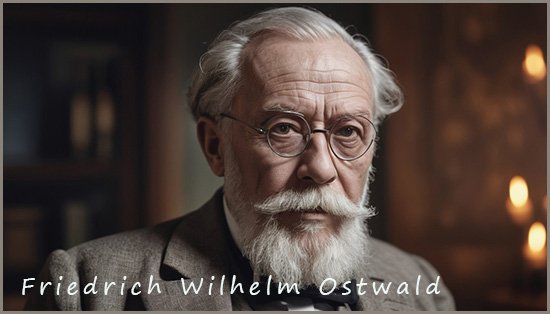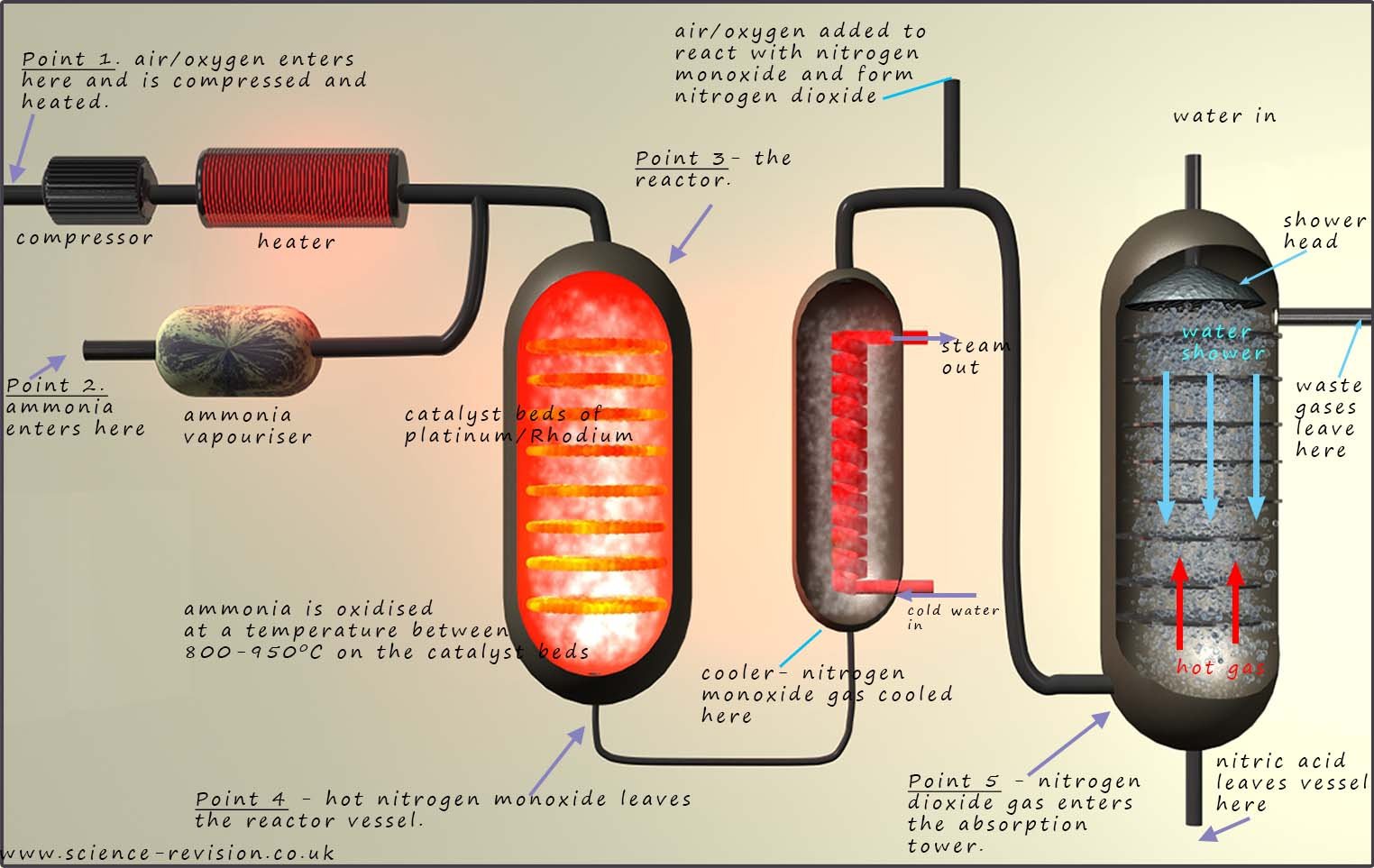Chemistry only
Making fertilisers industrially
The Ostwald process for making nitric acid
Ammonium nitrate is perhaps the most common compound found in
fertilisers. It can be made by reacting an alkaline solution of
ammonium hydroxide
with nitric acid. The word and symbolic equations for the reaction are given below:
ammonium hydroxide(aq) + nitric acid(aq) → ammonium nitrate(aq) + water(l)

NH4OH(aq) + HNO3(aq) → NH4NO3(aq) + H2O(l)
The two reactants in the above equation; the ammonium hydroxide and the nitric acid are both obtained thanks to the Haber process. Now recall that ammonium hydroxide is simply made by dissolving ammonia
in water:
ammonia(g) + water(l) ⇌ ammonium hydroxide(aq)
NH3(s) + H2O(g) ⇌ NH4OH(aq)
Obtaining large amounts of ammonium hydroxide should therefore be straight forward since ammonia gas is readily available; it can be obtained in large quantities from the
Haber process. The other reactant; nitric acid
is also obtained thanks to the Haber process.
Acidic non-metal oxides
One way to make
an acid is to simply dissolve a non-metal oxide in water, for example the word equations below show how some common everyday acids are made by dissolving non-metal oxides in water:
Non-metal oxide + water → acid
Carbon dioxide + water → carbonic acid
Sulfur dioxide + water → sulfurous acid
Sulfur trioxide + water → sulfuric acid
Nitrogen dioxide + water →nitric acid
Making nitric acid
The word equation above shows that to make nitric acid you simply have to dissolve nitrogen dioxide gas in water. However one of the main problems with making nitric acid is actually getting the nitrogen dioxide gas that can then be dissolved in water to make the nitric acid. Nitrogen gas is a very unreactive gas
so simply burning nitrogen gas in air/oxygen
to make the nitrogen dioxide gas will not work!
nitrogen(g) + oxygen(g) → nitrogen dioxide (g)
Burning ammonia gas
So what is needed is another way of preparing nitrogen dioxide gas. What about burning ammonia?
Ammonia burns in oxygen with a
yellowish coloured flame; as shown in the image below:

However there is a problem, ammonia burns to produce
nitrogen gas and water. No
nitrogen dioxide gas is produced as we might
have been hoped:
ammonia(g) + oxygen(g) → nitrogen(aq) + water(l)
However by altering the conditions above it is possible to obtain nitrogen dioxide gas, the gas needed to make
nitric acid.
All that is needed is the introduction of a platinum catalyst and some heat, as outlined in the image below:

This time in the presence of a platinum catalyst the ammonia
gas is oxidised to give nitrogen monoxide gas and water vapour:
ammonia(g) + oxygen(g) → nitrogen monoxide(g) + water(l)
4NH3(s) + 5O2(g) → 4NO(g) + 6H2O(l)
Nitrogen monoxide (NO) gas which is often called nitric oxide is a colourless
gas that forms inside the combustion tube. However
on exposure to air/oxygen the nitrogen monoxide gas is immediately oxidised
to form reddish-brown gas nitrogen dioxide gas.
nitrogen monoxide(g) + oxygen(g) → nitrogen dioxide(g)
2NO(g) + O2(g) → 2NO2(g)
Now
Nitrogen dioxide is a reddish-brown toxic gas with a bleachy smell but it dissolves in water in the presence of air/oxygen to form
nitric acid:
The Ostwald process for making nitric acid

Now that a method had been found to make nitrogen dioxide gas all that was needed was a method to scale up the process to produce large amounts of nitric acid. The scientist who devised the industrial process for the large scale manufacture of nitric acid was the German Nobel prize winning chemist Friedrich Wilhelm Ostwald. Ostwald dissolved nitrogen dioxide gas in the presence of air/oxygen and water to make nitric acid, an equation for this reaction is shown below:
nitrogen dioxide(g) + water(l) + oxygen(g) → nitric acid(aq)
4NO2(g) + 2H2O(l) + O2(g) → 4HNO3(aq)
The image below shows an outline of the
Ostwald process for making nitric acid, at first glance it might look complicated but it is actually very straightforward.

Starting from the left hand-side of the image:
- At point 1 in the image above oxygen gas from the air enters a compressor where it is compressed to between
4-10 atmospheres pressure and then pre-heated before it enters the reactor.
- At point 2 in the image above liquid ammonia from the Haber process
enters the vaporiser where it is turned into a gas.
Next the oxygen and gaseous ammonia
enter the reactor.
- At point 3- Inside the reactor the ammonia is oxidised to nitrogen monoxide gas
in a high temperature catalysed reaction.
A platinum/rhodium catalyst is used and temperatures are in the range 800-950OC. This reaction is highly exothermic
and releases a large amount of heat energy. This heat can be used to generate electricity or used as a heat source to
pre-heat gases elsewhere in the reaction. An equation for the reaction that takes place inside the reactor is shown below:
ammonia(g) + oxygen(g) → nitrogen monoxide(g) + water(l)
4NH3(s) + 5O2(g) → 4NO(g) + 6H2O(l)
-
At point 4- The nitrogen monoxide gas leaves the reactor and is cooled
in the cooler. Here cold water is turned into steam as
the hot nitrogen monoxide loses its heat energy. The cool
nitrogen monoxide gas now joins with oxygen to
form nitrogen
dioxide gas:
nitrogen monoxide(g) + oxygen(g) → nitrogen dioxide(g)
2NO(g) + O2(g) → 2NO2(g)
- At point 5 - The final vessel in the image is called the absorption tower. Here a shower of water falls from the top of the tall tower and meets the nitrogen dioxide gas as it rises up from the bottom of the tower.
The nitrogen dioxide gas dissolves in the shower of water to form nitric acid. The nitric acid then leaves at the base of the absorption tower and is collected in a large tank.
The nitric acid produced can then be reacted with ammonium hydroxide solution, made by dissolving
ammonia in water. This neutralisation reaction will then form
ammonium nitrate:
ammonium hydroxide(aq) + nitric acid(aq) → ammonium nitrate(aq) + water(l)
NH4OH (aq) + HNO3(aq) → NH4NO3(aq) + H2O(l)
Key points
- Ammonia is a basic gas that
is very soluble in water. Ammonia
gas dissolves in water to
form an alkaline solution of ammonium hydroxide.
- Non-metal oxides are acidic. This means that they dissolve in
water to form acids.
- To make nitric acid the brown gas
nitrogen dioxide is dissolved in water.
- The simplest way to make nitrogen dioxide gas is by burning
ammonia in the presence of a platinum catalyst. This forms the colourless
nitrogen monoxide which immediately oxidises in air to form the brown gas
nitrogen dioxide.
Practice questions
Next






